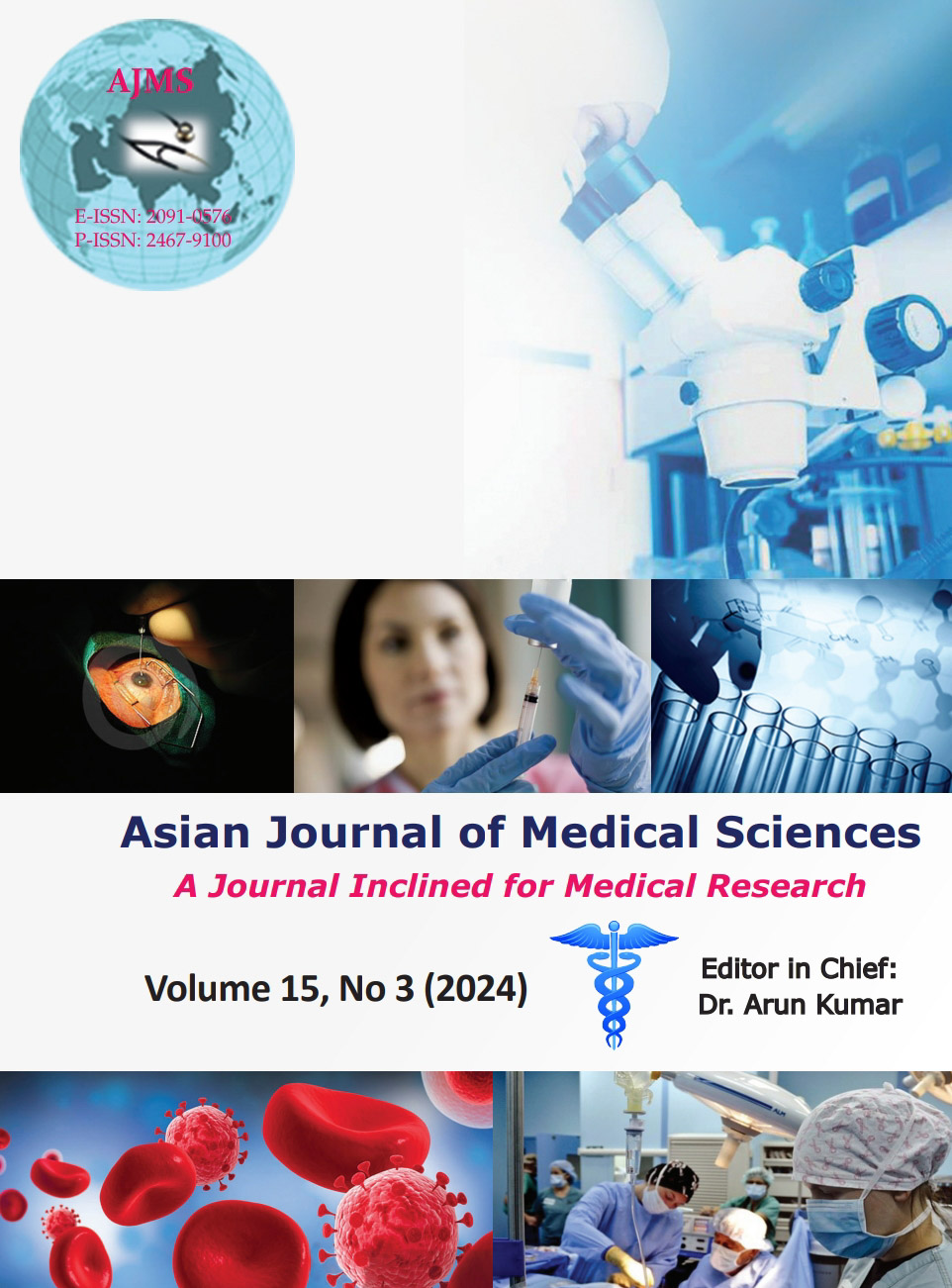Clinicopathological study of pigmented fungal lesions with special reference to subcutaneous phaeohyphomycosis: A 3-year study in a tertiary care hospital of Eastern India
Keywords:
Pigmented fungi; Melanin; Phaeohyphomycosis; HistomorphologyAbstract
Background: Fungal infections are predominantly opportunistic infections in immunocompromised patients and in immunocompetent adults with a history of trauma. Recently, there is an increase in trends of fungal infections in immunocompetent individuals also without any history of trauma. Pigmented fungi are a group of fungi that have pigment in their cell wall and also known as dematiaceous fungi. These pigmented fungi include phaeohyphomycosis with a differential diagnosis of chromoblastomycosis, cryptococcosis, mycetoma, and aspergillus. Phaeohyphomycosis is a subcutaneous or systemic infection characterized histologically by dark-colored fungal hyphae and yeast forms (black yeast).
Aims and Objectives: The aim of the present study is to analyze the clinicopathological features of pigmented fungal infections in biopsy specimen based on their histomorphology.
Materials and Methods: This was a prospective study in which we have analyzed the dematiaceous fungal species by their histomorphological characteristics in biopsy specimens.
Results: A total of 21 cases of biopsy specimens (with the clinical presentation of cutaneous/subcutaneous lesions) were studied histologically which showed 13 cases of phaeohyp homycosis, seven cases of eumycotic mycetoma, and one case of chromoblastomycosis. There was male predominance (17, 80.95%) and the majority of the patients were >60 years (16, 76.19%). Most common site of infection was foot with predominant clinical presentation as subcutaneous mass lesion.
Conclusion: All the cases of dematiaceous fungal infections were diagnosed by histopathological examination. Melanin in the cell wall of dematiaceous fungi is the pathogenic factor. Phaeohyphomycosis is no longer considered as a rare infection rather there is an increasingly incidence of recognized infection. Although culture and histopathological study remain important tools for final diagnosis, various molecular studies might be helpful for accurate diagnosis.
Downloads
Downloads
Published
How to Cite
Issue
Section
License
Copyright (c) 2023 Asian Journal of Medical Sciences

This work is licensed under a Creative Commons Attribution-NonCommercial 4.0 International License.
Authors who publish with this journal agree to the following terms:
- The journal holds copyright and publishes the work under a Creative Commons CC-BY-NC license that permits use, distribution and reprduction in any medium, provided the original work is properly cited and is not used for commercial purposes. The journal should be recognised as the original publisher of this work.
- Authors are able to enter into separate, additional contractual arrangements for the non-exclusive distribution of the journal's published version of the work (e.g., post it to an institutional repository or publish it in a book), with an acknowledgement of its initial publication in this journal.
- Authors are permitted and encouraged to post their work online (e.g., in institutional repositories or on their website) prior to and during the submission process, as it can lead to productive exchanges, as well as earlier and greater citation of published work (See The Effect of Open Access).




